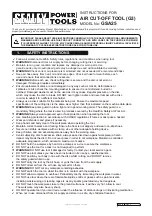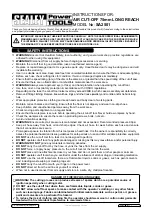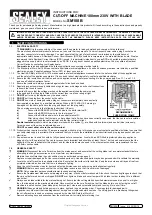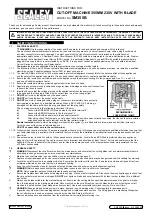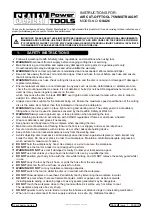
e-STUDIO170F Circuit Description
January 2005 © TOSHIBA TEC
7 - 16
(1) The CIS detects the LED’s light reflected by a document as an analog electric signal and sends it
to the DSC (IC27).
(2) The DSC converts the electric signal to a digital signal and subjects it to data correction, then
converts it to raster data. The raster data is serially transferred to the DSC interface of the ASIC
(IC15).
(3) The raster data is converted from serial to parallel data by the DSC interface and transferred to
the PIX area of the SDRAM (PIX-SDRAM: IC1) through the SDRAM controller of the ASIC.
(4) The raster data is transferred to the CODEC (IC16) through the CODEC interface of the ASIC
where it is coded to data in the JBIG format. Then the JBIG coded data is transferred to the SYS
area of the SDRAM (SYS-SDRAM: IC1) through the SDRAM controller. This allows the coded
data for the documents for transmission to be stored in the SYS-SDRAM.
(5) The JBIG coded data is transferred to the CODEC where it is decoded to raster data. Then the
raster data is transferred to the PIX-SDRAM.
(6) The raster data is transferred to the CODEC where it is coded in the MH coding format. Then the
MH coded data is transferred to the PIX-SDRAM.
(7) The MH coded data is transferred to the PC interface of the ASIC and sent to the PC through the
USB controller (IC49).
Summary of Contents for ESTUDIO170F
Page 2: ... 2005 TOSHIBA TEC CORPORATION All rights reserved ...
Page 192: ...e STUDIO170F Function Settings January 2005 TOSHIBA TEC 4 132 ...
Page 214: ...e STUDIO170F Mechanical Description January 2005 TOSHIBA TEC 5 22 ...
Page 308: ...e STUDIO170F Circuit Description January 2005 TOSHIBA TEC 7 78 ...
Page 372: ...e STUDIO170F Removal Replacement Adjustment January 2005 TOSHIBA TEC 8 64 ...
Page 490: ...e STUDIO170F Appendix January 2005 TOSHIBA TEC 12 8 ...
Page 491: ......
Page 492: ......









































